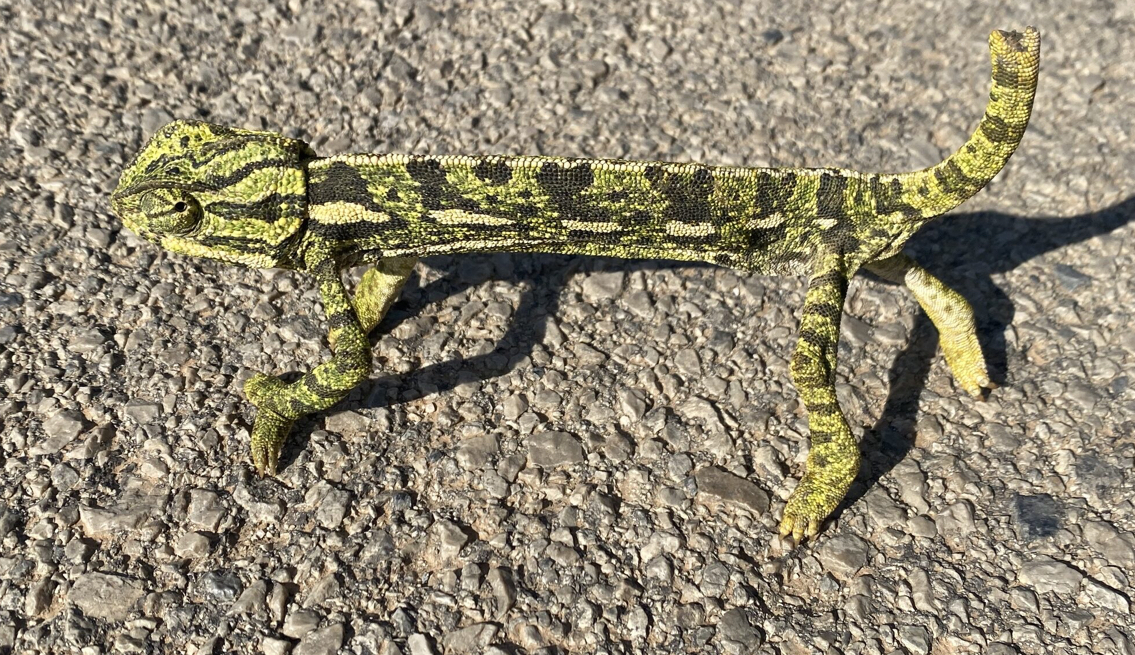Roads and Reptiles: How Highways Threaten the European Chameleon

Farfán et al. (2025) present a compelling study on how anthropogenic landscape features — particularly roads — affect the distribution and habitat use of the European chameleon (Chamaeleo chamaeleon) in southern Spain. Published in Conservation Science and Practice, the article offers robust field data and statistical analysis that highlight the ecological consequences of infrastructure development on this cryptic reptile.
Study Design and Methodology
The research was conducted near the A7 motorway in Málaga, a high-traffic corridor with over 43,000 vehicles per day. The team divided the study area into five zones, each 225 meters wide, extending progressively away from the road. Surveys were conducted at night using visual encounter methods, and data were collected on chameleon abundance, sex, body condition, and habitat structure. Arthropod sampling was also performed to assess prey availability.
The authors employed generalized linear models to analyze the relationship between chameleon presence and environmental variables, including vegetation density, proximity to roads, and food availability.
Key Findings
- Chameleon density decreased significantly near the motorway, with the highest abundance found in zones farthest from the road.
- Vegetation structure played a critical role: chameleons preferred areas with moderate plant cover, avoiding both overly dense and sparse vegetation.
- Food availability (arthropods) was consistent across zones, suggesting that prey abundance was not a limiting factor near roads.
- The study identified a "road effect zone" extending up to 675 meters from the motorway, where chameleon presence was markedly reduced.
These findings suggest that road proximity alters habitat suitability, not by reducing food, but by increasing disturbance and possibly fragmenting breeding territories.
Conservation Implications
Farfán et al. argue that conservation strategies for C. chamaeleon must account for landscape-level impacts, especially in regions undergoing rapid urbanization. Buffer zones and habitat corridors may be essential to mitigate the effects of roads and preserve viable populations.
Citation
Farfán, M.A., Duarte, J., Romero, D., Colorado-Pedrero, L., García-Quevedo, P., Arroyo-Morales, R., & Díaz-Ruiz, F. (2025). Effects of habitat characteristics in an anthropized landscape on the European chameleon (Chamaeleo chamaeleon). Conservation Science and Practice, e70070. https://doi.org/10.1111/csp2.70070
This study is a valuable contribution to road ecology and reptile conservation, offering actionable insights for planners and herpetologists alike.